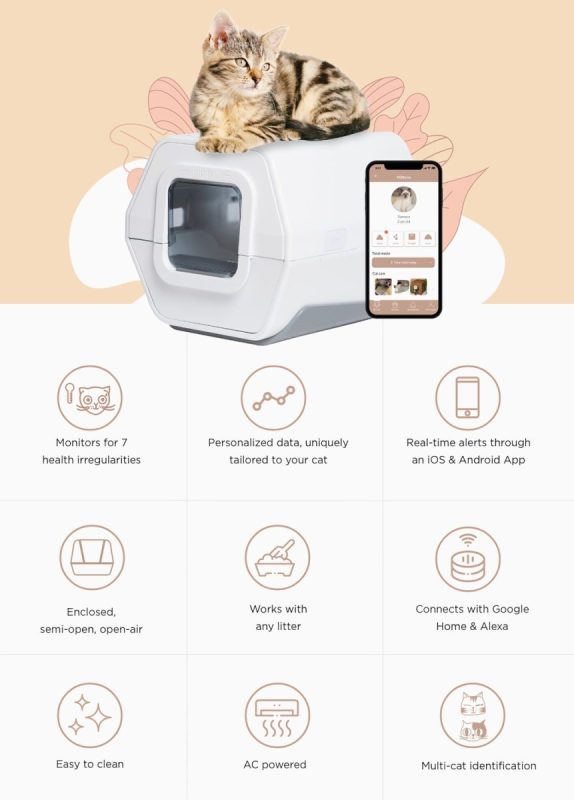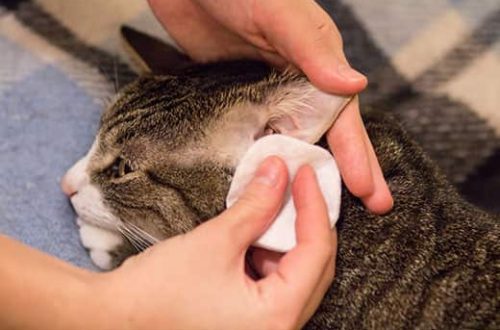
Smart cat tray: what the owner needs to know
Traditional trays have stood the test of time, but what potential conveniences does a smart tray provide? Why buying a self-cleaning toilet can be a good option, Hill’s experts explain.
Contents
Autotray: a non-standard approach
Although many consider robotic trays to be the technology of the future, they have been on the market for 20 years. As a rule, such accessories include three main components:
- A sensor that detects that the cat has entered the tray and exited it.
- Comb or rotating blade.
- Waste container.
Approximately 15-20 minutes after the sensor registers that the cat has left its toilet, the tray begins to rake, collect or flush waste. Then, with the help of a screening mechanism, the waste is removed and dumped into a special tray. Depending on the model, such a pallet can be reusable or disposable.
An even more complex option can be a Wi-Fi tray based on centrifugal force. The model of this type is equipped with a light indicator that reminds you of the need to change the filler, and the ability to control the tray from your phone.
Benefits of a smart cat litter box
Perhaps the biggest benefit of using a smart tray is the savings in scooping and sieving time. Most models allow cat owners to empty and clean the tray or tray as little as once a week rather than daily or even more frequently. Who might not like it?
However, if the owners plan to leave the cat at home alone for a long time, you still have to ask someone to check the pet and its smart toilet. Despite such forced work, the amount of cleaning that this person has to do will be significantly reduced.
The automatic cleaning tray also helps to reduce odor. This is useful, especially if your furry friend is not very good at burying his waste.
How much does an automatic cat litter box cost
The cost of the auto tray depends on the model. Automatic trays cost $20 to $200, while smart or robotic trays cost $450 to $700. The indicated prices do not include the cost of accessories and spare parts.
It is important to consider that many devices require some type of filler, such as lumps or crystals. Otherwise, the smart accessory may fail, and repairs can be very expensive.
The Pet Health Network recommends having one more litter box in the home than cats. Following this principle will significantly increase the costs associated with self-cleaning trays.
How to train a cat to use an automatic litter box
It takes time and patience to train your pet to a new litter box, so don’t give up. To get started, simply follow the manufacturer’s instructions to get the litter box up and running and set it up anywhere that gives your cat privacy.
Potty training a cat with automatic cleaning is about the same as potty training a kitten. Give your cat the opportunity to use her current or new litter box, but not turn on the new litter box until the cat is comfortable with it. As soon as she feels comfortable, you should take about a week to observe her behavior near the accessory.
Not all pets adjust quickly to the sounds and mechanics of a smart litter box with automatic cleaning. A cat that is disturbed by the thought of going to an automatic litter box may begin to avoid it. As a result, she will begin to hold back, which can lead to health problems. Another option is that the animal will begin to relieve itself outside the tray, which is not at all useful either for it or for the owners.
When deciding whether to buy a robotic tray, the age of the animal must be taken into account. Kittens will probably find it easier to adjust to a smart litter box than older pets.
Before deciding to switch to an automatic tray, you should weigh the potential costs against the time savings benefits. In some cases, the cost of buying and maintaining a robotic litter box can be prohibitive.
The most important thing is to choose the litter box your cat will use and base your choice on what is best for her health and happiness.
See also:
- How to toilet train a kitten
- How to train a cat to use a scratching post
- How smart are cats and cats according to scientists?
- Why do cats and cats lick their fur?





